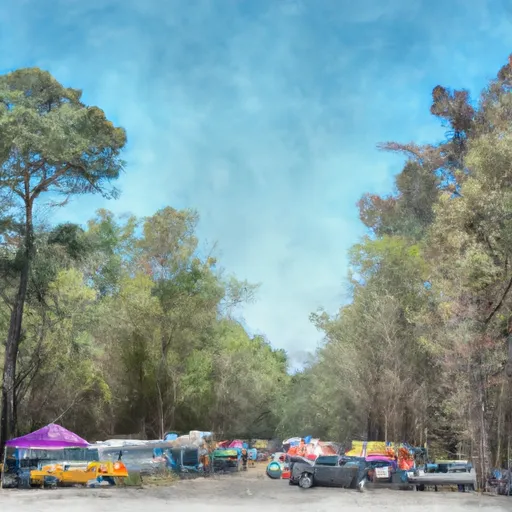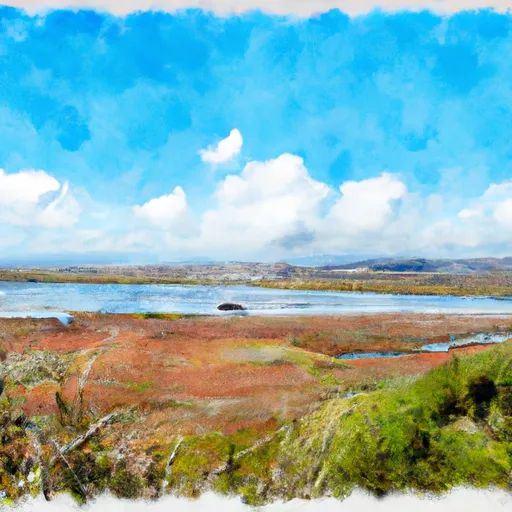National Wildlife Refuge Humboldt Bay
Rate this placeLast Updated: December 28, 2025
National Wildlife Refuge Humboldt Bay is a protected area located in the state of California that was established in 1971.
°F
°F
mph
Wind
%
Humidity
Summary
The refuge covers 2,400 acres and it is home to various species of birds, mammals, and fish, making it an ideal destination for nature lovers and outdoor enthusiasts.
One of the main reasons to visit the refuge is to see the diverse wildlife that can be found in the area. Visitors can spot a variety of bird species, including ducks, geese, shorebirds, and raptors. The refuge also supports populations of black bears, river otters, and sea lions, among other animals.
The refuge offers several points of interest, including the South Spit Trail, a hiking trail that leads to the beach and offers stunning views of the bay and the ocean. The Humboldt Bay National Wildlife Refuge Visitor Center is another popular spot, where visitors can learn about the history and ecology of the area through exhibits, interactive displays, and ranger-led programs.
Interesting facts about the refuge include that it is one of the largest salt marshes on the West Coast and it provides important habitat for migratory birds along the Pacific Flyway. The refuge is also part of the Humboldt Bay estuary, which is one of the most productive and diverse ecosystems in California.
The best time of year to visit the refuge is during the fall and winter months, when the migratory bird populations are at their peak. The refuge is open year-round, but visitors should check the weather conditions and tide tables before planning their trip, as some areas may be inaccessible during high tides.
Overall, National Wildlife Refuge Humboldt Bay is a unique and beautiful destination that offers visitors the opportunity to experience California's natural beauty and wildlife up-close. Whether you are a birdwatcher, hiker, or simply looking for a peaceful place to relax, this refuge has something to offer for everyone.
Weather Forecast
Park & Land Designation Reference
Large protected natural areas managed by the federal government to preserve significant landscapes, ecosystems, and cultural resources; recreation is allowed but conservation is the priority.
State Park
Public natural or recreational areas managed by a state government, typically smaller than national parks and focused on regional natural features, recreation, and education.
Local Park
Community-level parks managed by cities or counties, emphasizing recreation, playgrounds, sports, and green space close to populated areas.
Wilderness Area
The highest level of land protection in the U.S.; designated areas where nature is left essentially untouched, with no roads, structures, or motorized access permitted.
National Recreation Area
Areas set aside primarily for outdoor recreation (boating, hiking, fishing), often around reservoirs, rivers, or scenic landscapes; may allow more development.
National Conservation Area (BLM)
BLM-managed areas with special ecological, cultural, or scientific value; more protection than typical BLM land but less strict than Wilderness Areas.
State Forest
State-managed forests focused on habitat, watershed, recreation, and sustainable timber harvest.
National Forest
Federally managed lands focused on multiple use—recreation, wildlife habitat, watershed protection, and resource extraction (like timber)—unlike the stricter protections of national parks.
Wilderness
A protected area set aside to conserve specific resources—such as wildlife, habitats, or scientific features—with regulations varying widely depending on the managing agency and purpose.
Bureau of Land Management (BLM) Land
Vast federal lands managed for mixed use—recreation, grazing, mining, conservation—with fewer restrictions than national parks or forests.
Related References
Area Campgrounds
| Location | Reservations | Toilets |
|---|---|---|
 Humboldt County Fairgrounds
Humboldt County Fairgrounds
|
||
 Samoa Boat Ramp County RV Park
Samoa Boat Ramp County RV Park
|
||
 Redwood Acres Fairgrounds
Redwood Acres Fairgrounds
|

 Humboldt Bay National Wildlife Refuge
Humboldt Bay National Wildlife Refuge
 Table Bluff Ecological Reserve
Table Bluff Ecological Reserve
 Eel River Wildlife Area
Eel River Wildlife Area
 South Spit Wildlife Area
South Spit Wildlife Area
 Elk River Wildlife Area
Elk River Wildlife Area